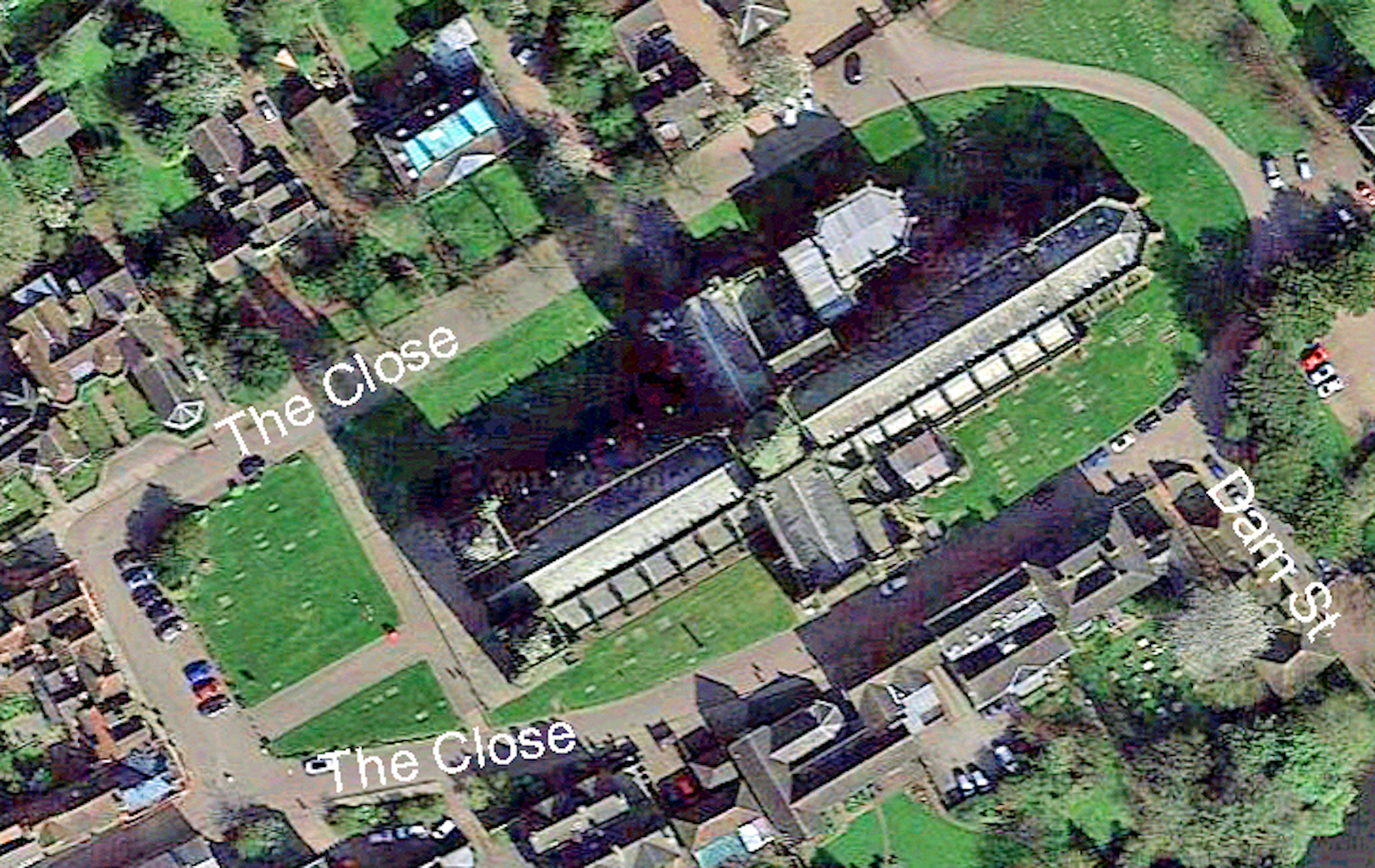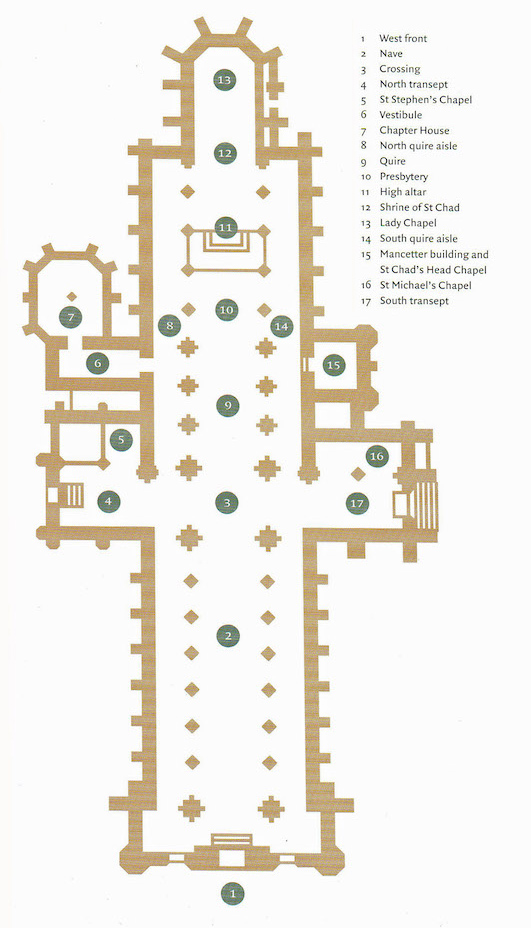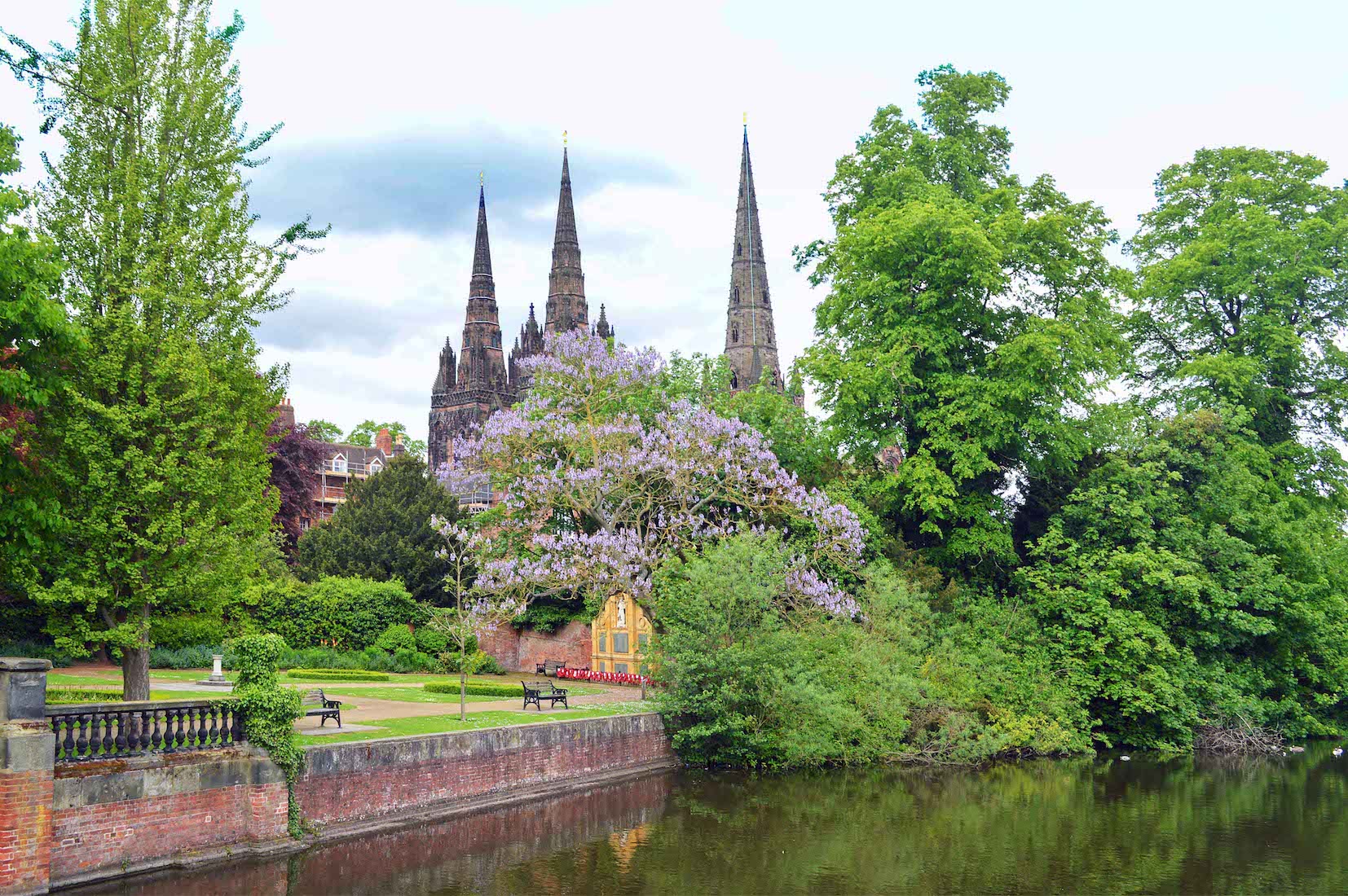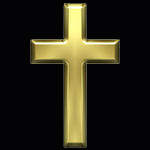LICHFIELD CATHEDRAL
STAFFORDSHIRE ENGLAND
PAUL SCOTT

SATELLITE VIEW
Lichfield Cathedral is nicely laid out on an oval of green. Its main axis points in a direction 30° north of east, so this will be the direction of the liturgical East (capital letter) used on this site. The Minster Pool is just visible in the bottom right corner. We observe the two West towers and a central tower at the crossing of the transepts. The chapter house is easily seen, East of the North transept, and the small St Chad’s Head chapel East of the South transept. Various old Cathedral buildings surround The Close (road).

The Cathedral is essentially cruciform in shape with the chapter house, Lady chapel and St Chad’s chapel added on. A more carefully drawn plan of the Cathedral would show that the quire/sanctuary/Lady chapel section actually kinks slightly to the left with the angle at the crossing, but I have no idea why this is so. Unlike Truro Cathedral, it was hardly imposed from some external constraint. We shall begin our tour at bottom left, and work our way around the outside in an anti-clockwise direction. Entering the Cathedral through the West door (bottom), we explore nave, transepts, quire, sanctuary, finishing up at the Lady chapel. This is a wonderful Cathedral!
A history of this Cathedral is given below. Alternatively you might like to begin your tour now: just tap / click on START .
You can also go straight to certain intermediate points on the tour by a tap / click on one of the following links.
NOTE ON MAGNIFYING IMAGES
With this website format the images are large enough for most purposes. If there is a need for greater magnification of an image, go to the identical photo on
https://www.flickr.com/photos/paulscottinfo/albums
and use Command - + (Mac) or Windows - + (Windows).
HISTORY
[Wikipedia]
Early history and elevation to Archbishopric
When Chad was made Bishop of Mercia in 669, he moved his see from Repton to Lichfield, possibly because this was already a holy site, as the scene of martyrdoms during the Roman period. The first cathedral to be built on the present site was in 700, when Bishop Headda built a new church to house the bones of St Chad. This had become a sacred shrine to many pilgrims when he died in 672. Offa, King of Mercia seemed to resent his own bishops paying allegiance to the Archbishop of Canterbury in Kent, who, whilst under Offa’s control, was not of his own kingdom of Mercia. Offa therefore created his own archbishopric in Lichfield, which presided over all the bishops from the Humber to the Thames. All this began in 786, with the consent of Pope Adrian. The Pope’s official representatives were received warmly by Offa and were present at the Council of Chelsea (787), often called ‘the contentious synod’. Here it was proposed that the Archbishopric of Canterbury be restricted in order to make way for Offa’s new archbishop. It was vehemently opposed, but Offa and the papal representatives defeated Archbishop Jaenbert, installing Higbert as the new Archbishop of Lichfield. Pope Adrian sent Higbert the pallium, denoting his support for this move. In gratitude, Offa promised to send an annual shipment of gold to the Pope for alms and supplying the lights in St Peter’s church in Rome. However, the Archbishopric of Lichfield lasted for only 16 years, ending soon after Offa’s death, when it was restored to Archbishop Aethelheard of Canterbury.
Starting in 1085 and continuing through the twelfth century the original wooden Saxon church was replaced by a Norman cathedral made from stone, and this was in turn replaced by the present Gothic cathedral begun in 1195. It was completed by the building of the Lady Chapel in the 1330s. The choir dates from 1200, the transepts from 1220 to 1240 and the nave was started in 1260. The octagonal chapter house, which was completed in 1249 and is one of the most beautiful parts of the Cathedral with some charming stone carvings, houses an exhibition of the cathedral’s greatest treasure, the Lichfield Gospels, an 8th-century illuminated manuscript.
Devastation of the English Civil War
The Sleeping Children by Francis Chantrey (1817), portrays two young sisters, Ellen-Jane and Marianne, who died in tragic circumstances in 1812. There were three great sieges of Lichfield during the period 1643–1646 as the Cathedral close was surrounded by a ditch and defensive walls which made a natural fortress. The cathedral authorities with a certain following were for Charles I, but the townsfolk generally sided with Parliament, and this led to the fortification of the close in 1643. Robert Greville, 2nd Baron Brooke, led an assault against it, but was killed by a deflected bullet from John Dyott (known as ‘dumb’ because he was a deaf mute) who along with his brother Richard Dyott had taken up a position on the battlements of the central Cathedral spire on 2 March 1643. Brooke’s deputy John Gell, took over the siege. The Royalist garrison surrendered to Gell two days later. In April of the same year (1643) Prince Rupert led an Royalist expeditionary force from Oxford to recapture Lichfield. The siege started on 8 April. During the second assault Rupert’s engineers detonated what is thought to be the first explosive mine to be used in England to breach the defences. Unable to defend the Close, Colonel Russell, the parliamentary commander of the garrison, surrendered on terms to Rupert on 21 April. The Cathedral suffered extensive damage: the central spire was demolished, the roofs ruined and all the stained glass smashed. Bishop Hacket began the restoration of the Cathedral in the 1660s, aided by substantial funds donated by the restored monarch, but it was not until the 19th century that the damage caused by the Civil War was fully repaired. Up until the 19th century, on top of an ornamented gable, between the two spires, stood a colossal figure of Charles II, by William Wilson. Today it stands just outside the south doors.
Victorian restoration
Although the 18th century was a golden age for the City of Lichfield, it was a period of decay for the Cathedral. The 15th-century library, on the north side of the nave, was pulled down and the books moved to their present location above the chapter house. Most of the statues on the west front were removed and the stonework covered with Roman cement. At the end of the century James Wyatt organised some major structural work, removing the high altar to make one worship area of choir and Lady Chapel and adding a massive stone screen at the entrance to the choir. Francis Eginton painted the east window and was commissioned by the chapter to do other work in the Cathedral. The ornate west front was extensively renovated in the Victorian era by George Gilbert Scott. It includes a remarkable number of ornate carved figures of kings, queens and saints, working with original materials where possible and creating fine new imitations and additions when the originals were not available. Wyatt’s choir-screen had utilised medieval stone-work which Scott in turn used to create the clergy’s seats in the sanctuary. The new metal screen by Francis Skidmore and John Birnie Philip to designs by Scott himself is a triumph of High Victorian art, as are the fine Mintons tiles in the choir, inspired by the medieval ones found in the Choir foundations and still seen in the library.
To proceed with a tour of the Cathedral, tap / click on START .



